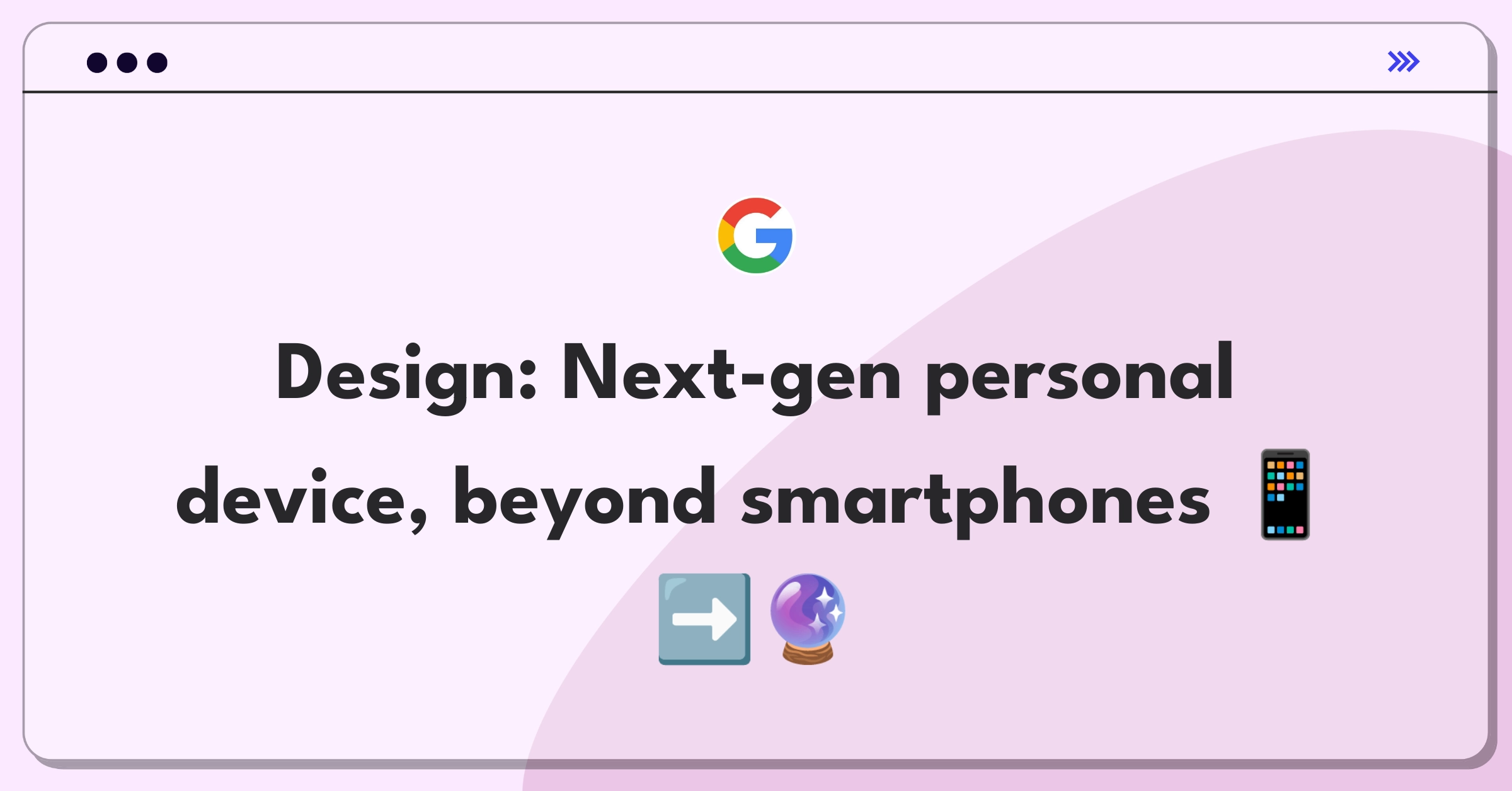Certainly, I'll provide a detailed, strategic answer to the product strategy problem you've presented. I'll approach this as if I'm directly addressing the interviewer in a first-person perspective, demonstrating deep product thinking and leadership.
Introduction
The strategic problem at hand is to design a product that will replace smartphones in 5-7 years. This is a significant challenge that requires us to envision the future of personal technology and communication. Our key business objectives for this product strategy should include:
- Capturing a significant market share in the post-smartphone era
- Driving innovation that aligns with evolving user needs and behaviors
- Establishing a new ecosystem that supports long-term growth and profitability
To address this challenge, I'll outline a comprehensive strategy that covers market analysis, product vision, roadmap development, prioritization, execution planning, metrics definition, and risk management.
Step 1
Clarify the Strategic Goals (3-4 minutes)
Before diving into the solution, I'd like to clarify a few key points to ensure our strategy aligns with the company's goals and market realities.
Why it matters: Determines the level of resources and commitment we can expect for this project. Expected answer: Confirmation that this is a key strategic initiative with full executive support. Impact on approach: Would influence the scale of our vision and the resources we allocate.
Why it matters: Helps us leverage our company's technological strengths and ongoing research. Expected answer: Information about key areas of technological focus, such as AR/VR, AI, or advanced materials. Impact on approach: Would guide our product concept and feature set based on our technological capabilities.
Why it matters: Influences our go-to-market strategy and initial product focus. Expected answer: Clarification on target markets, whether global or specific regions/segments. Impact on approach: Would shape our product design, features, and rollout strategy to meet the needs of priority markets.
Why it matters: Determines the long-term revenue strategy and ecosystem development. Expected answer: Guidance on preferred business models or openness to innovation in this area. Impact on approach: Would influence our product architecture, partnership strategies, and revenue projections.
Based on the answers to these questions, I'll synthesize the key strategic assumptions that will guide our solution approach. These assumptions will form the foundation of our product strategy, ensuring alignment with company goals and market realities.
Tip
I'll take a moment to organize my thoughts and ensure my strategic approach aligns with the company's objectives before moving forward.
Subscribe to access the full answer
Monthly Plan
The perfect plan for PMs who are in the final leg of their interview preparation
$99 /month
- Access to 8,000+ PM Questions
- 10 AI resume reviews credits
- Access to company guides
- Basic email support
- Access to community Q&A
Yearly Plan
The ultimate plan for aspiring PMs, SPMs and those preparing for big-tech
$99 $33 /month
- Everything in monthly plan
- Priority queue for AI resume review
- Monthly/Weekly newsletters
- Access to premium features
- Priority response to requested question


.png)